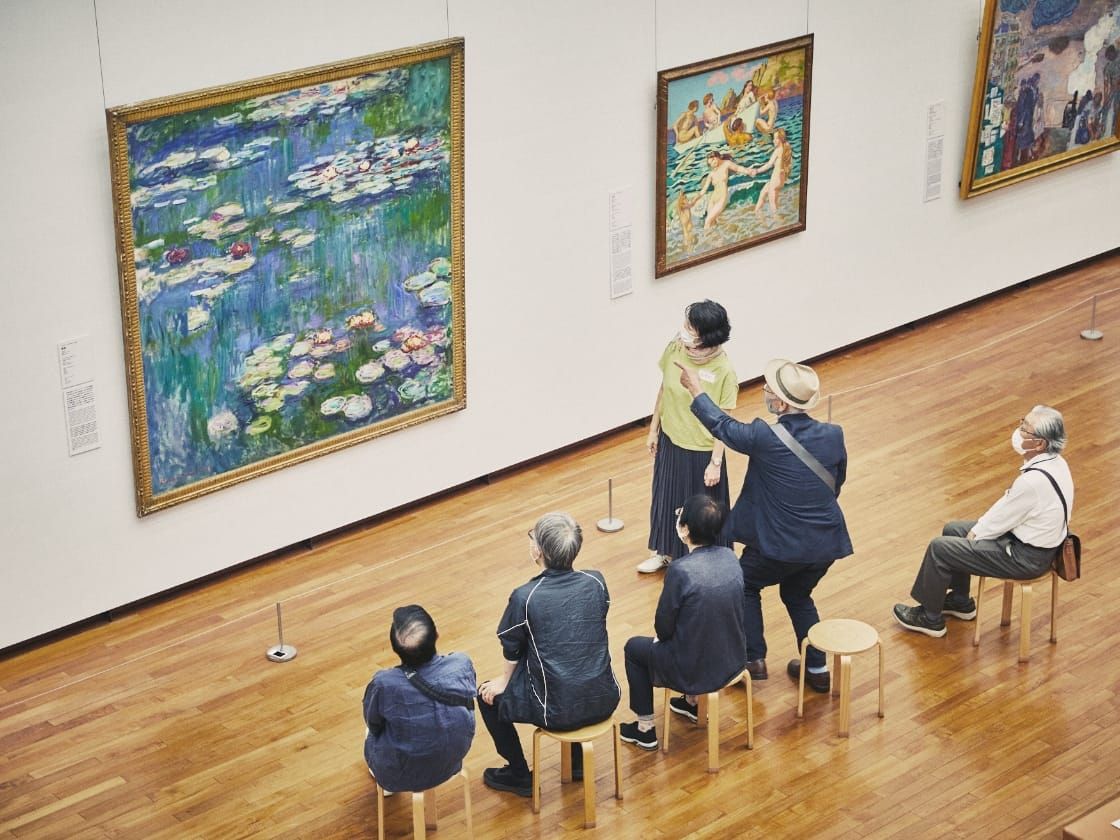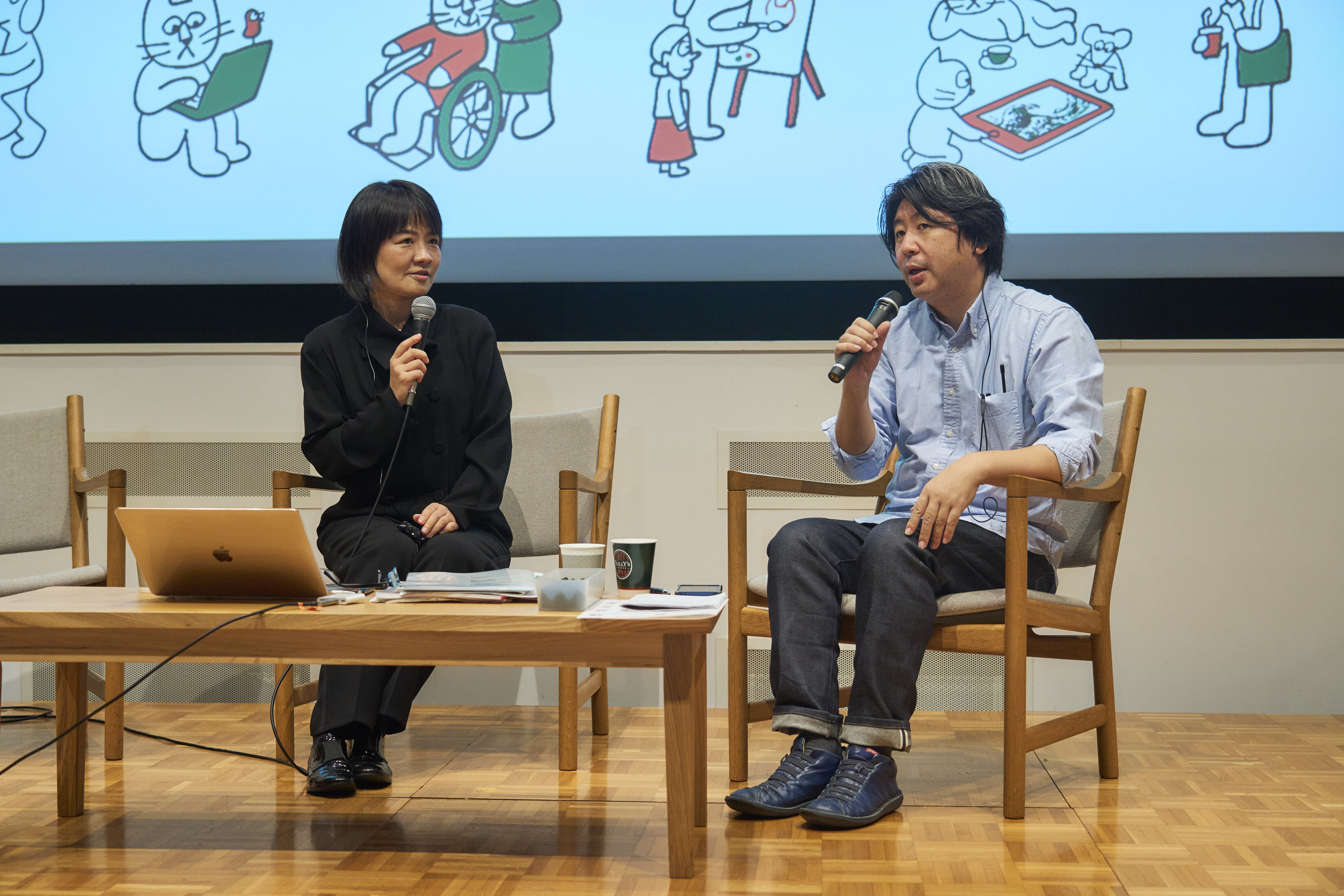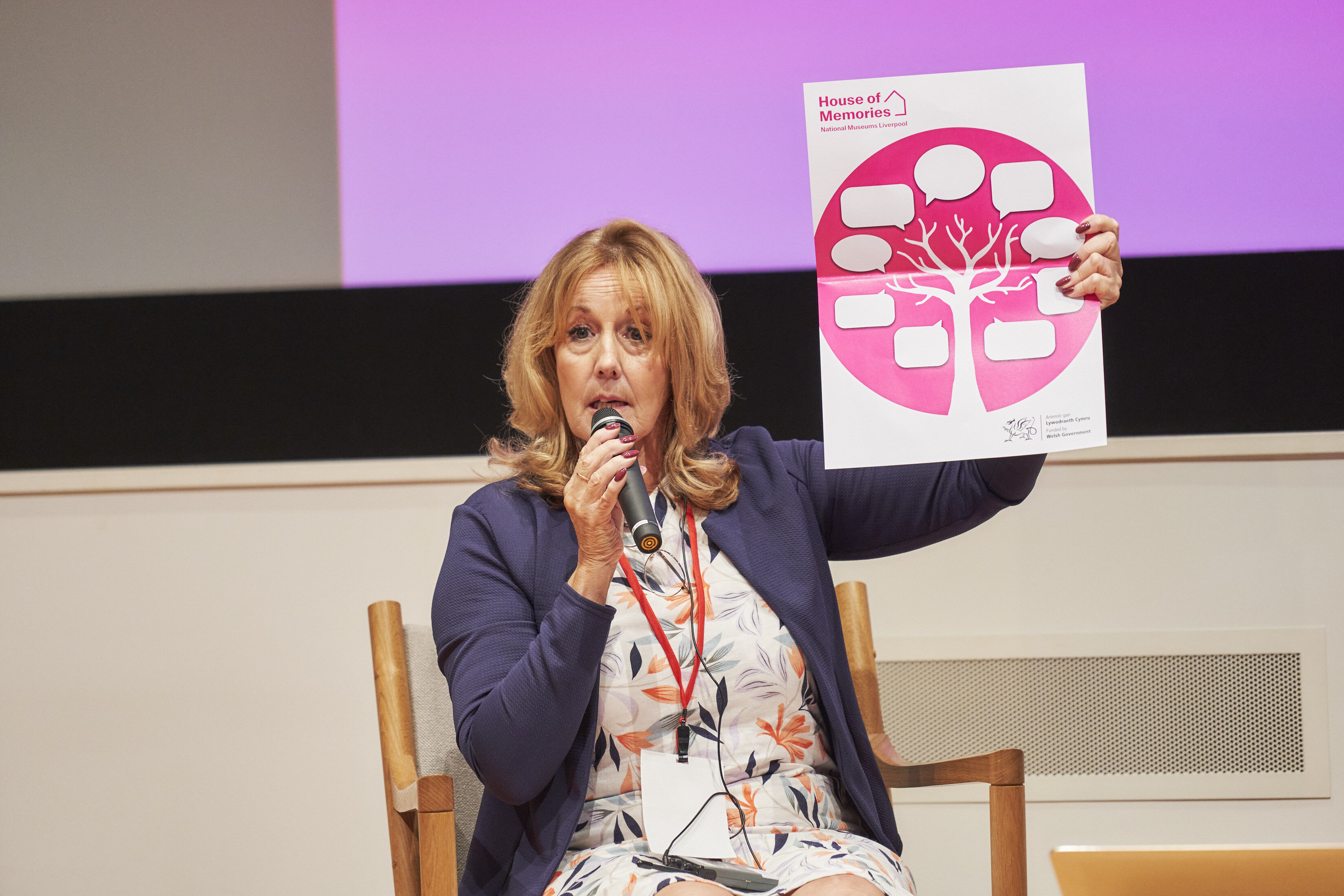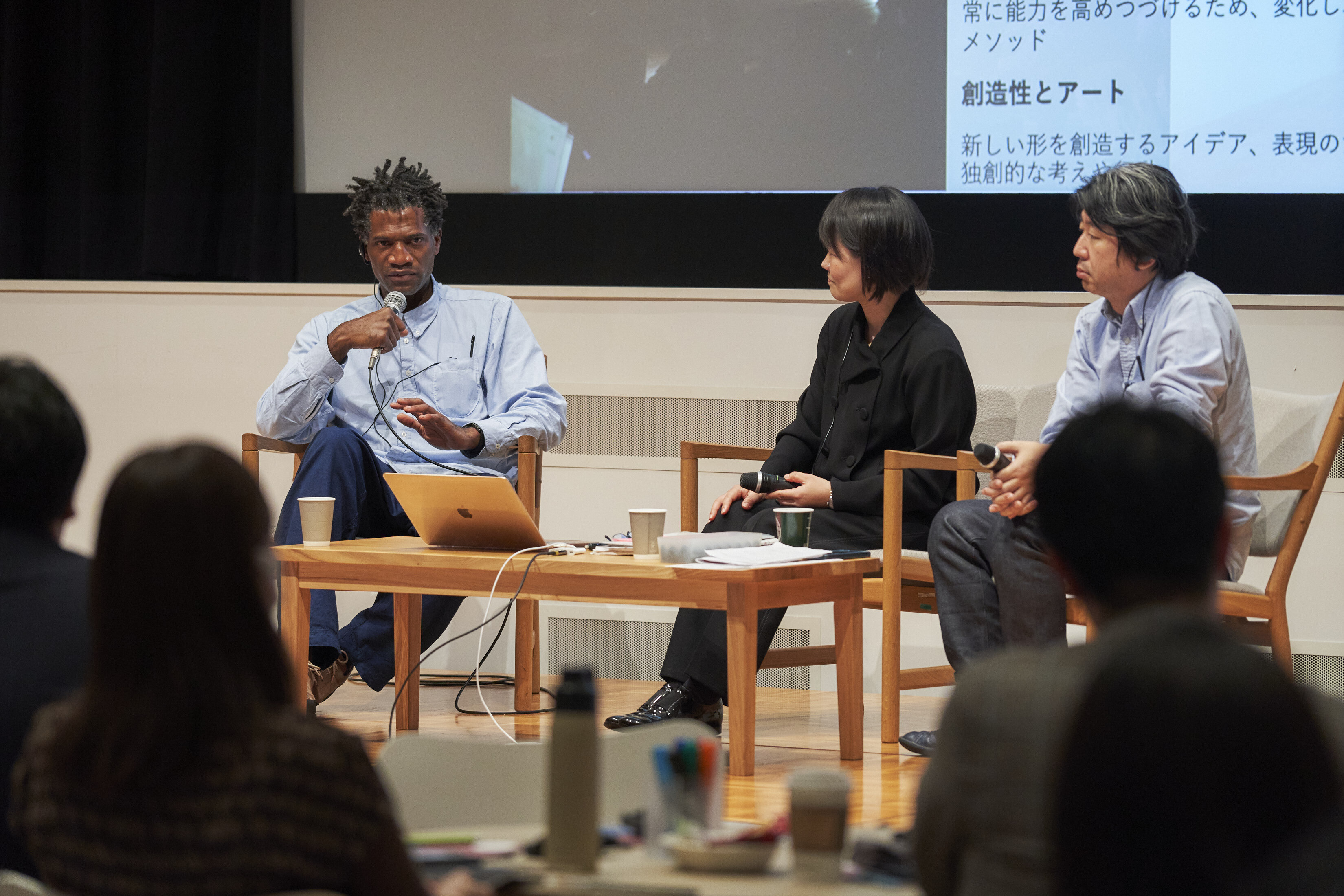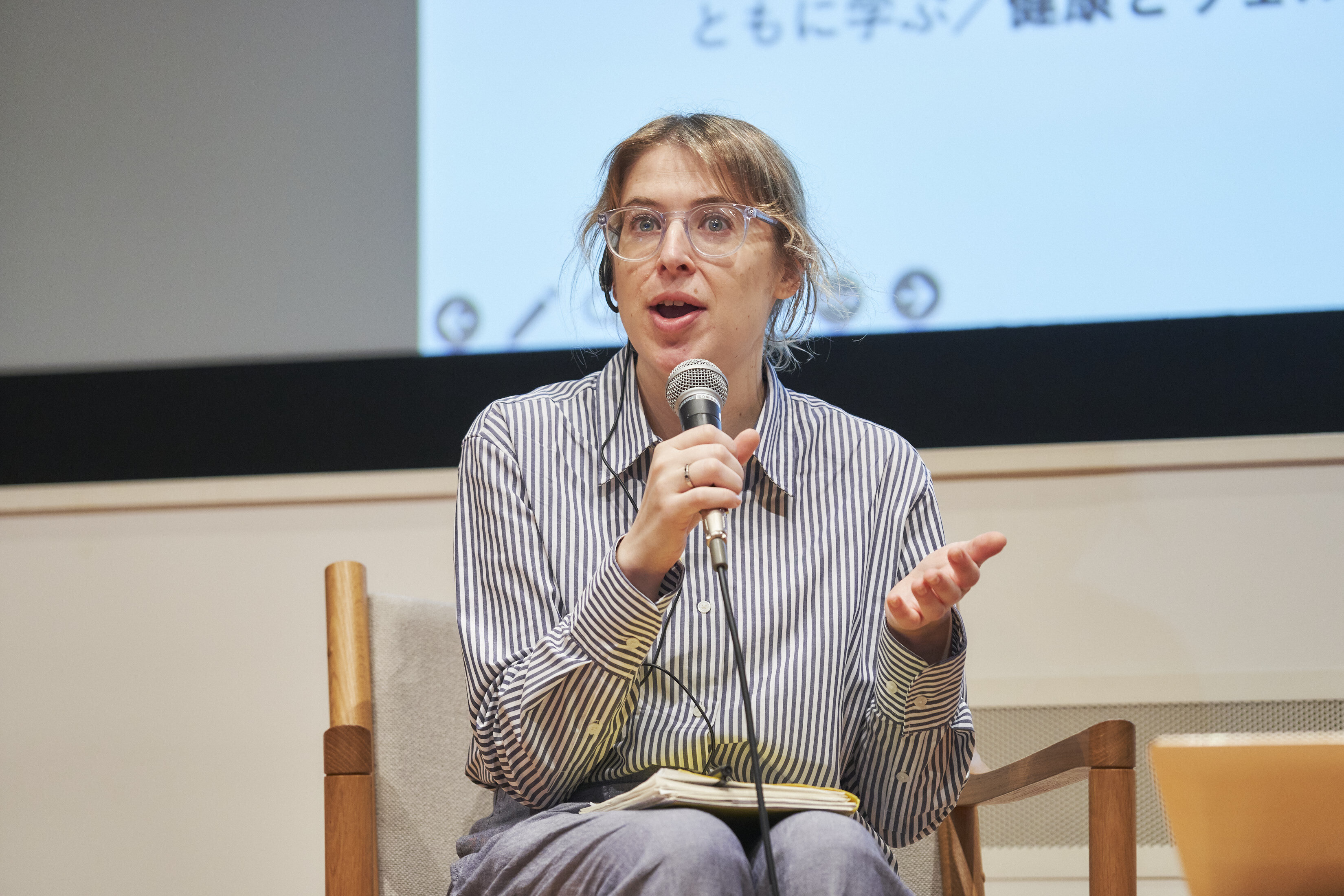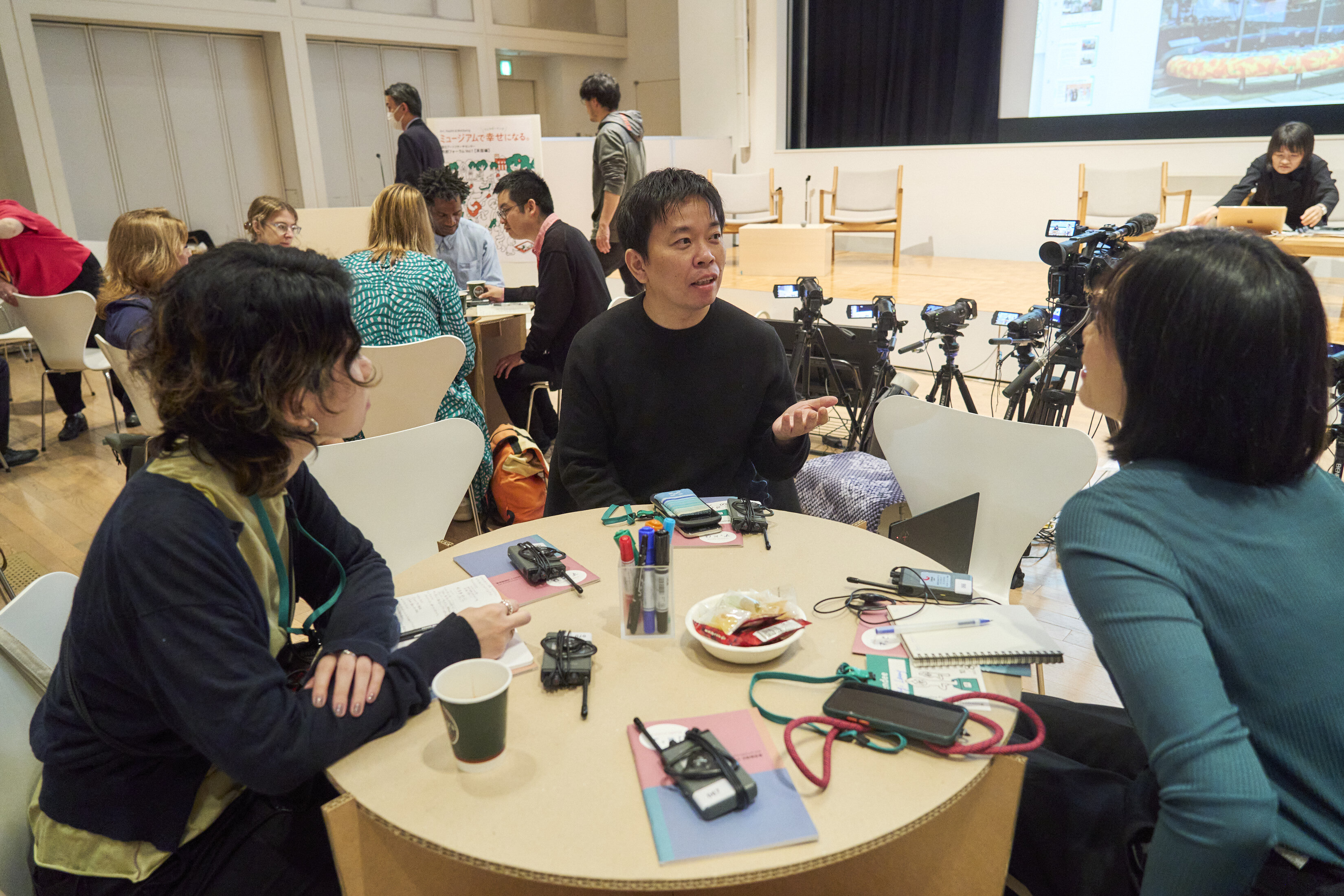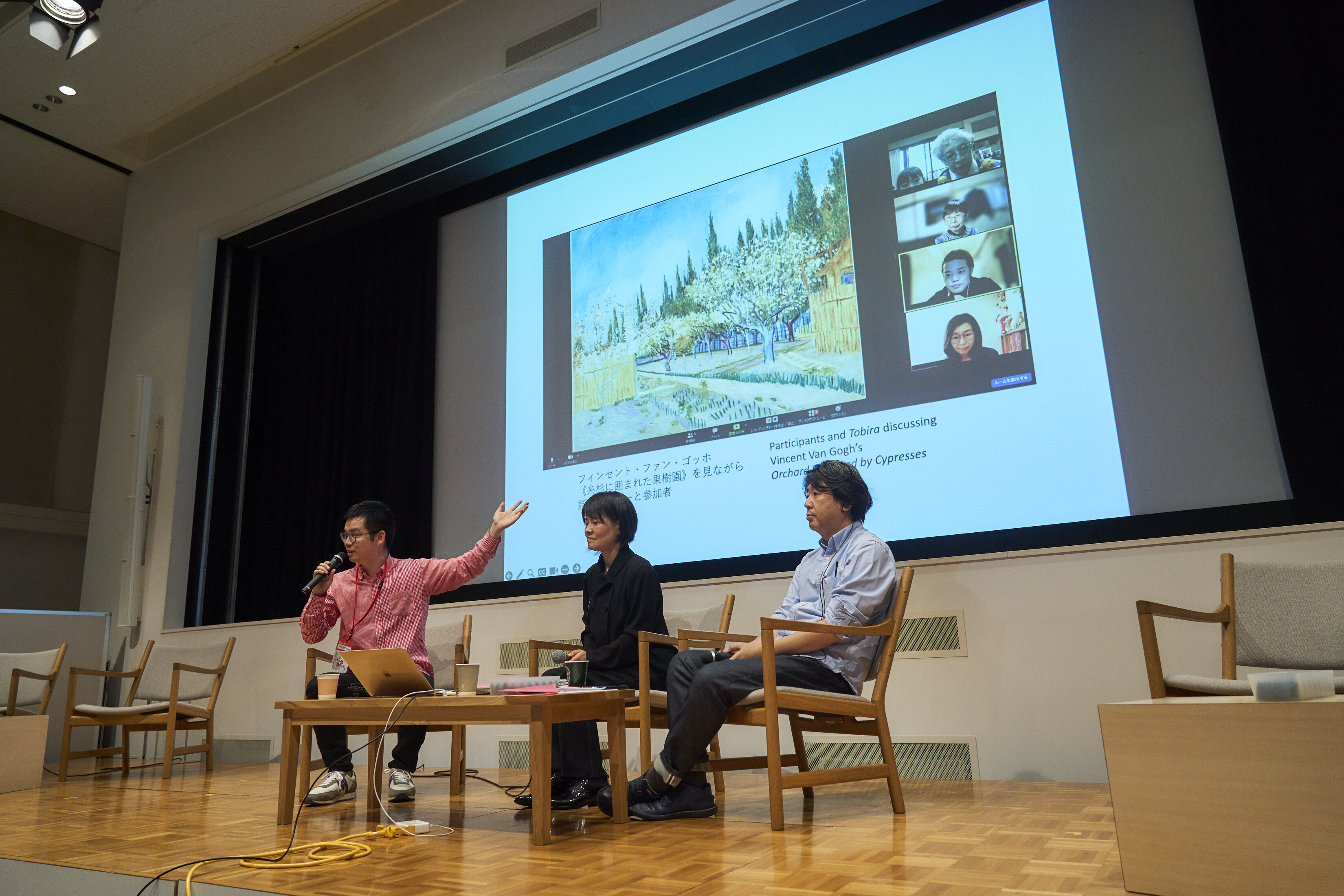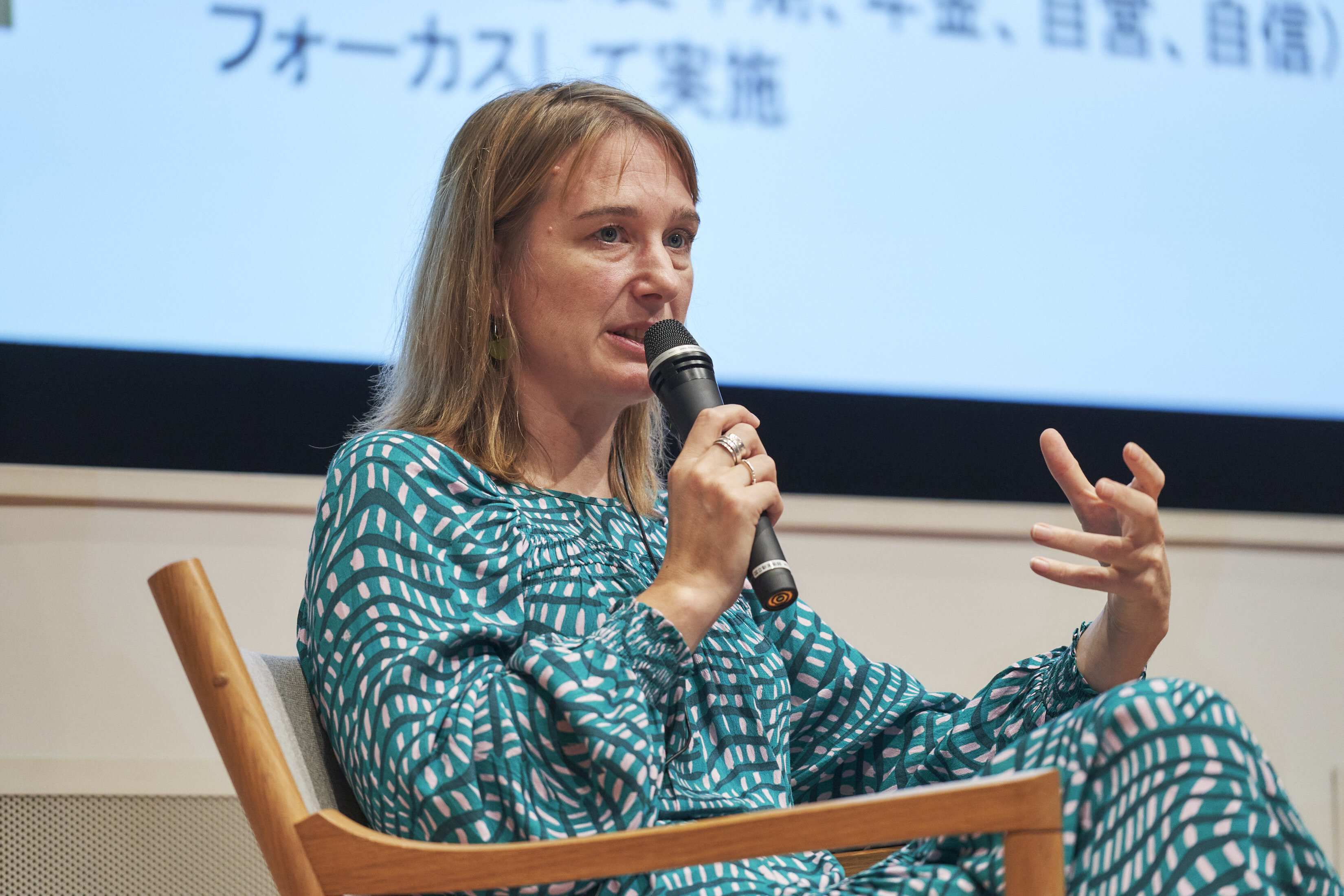[NCAR Creative Forum Report 3] Participation Report on the Dig Deep! Session Held on October 9th
Saki Matsuyama, Educator, The National Museum of Modern Art, Kyoto
![[NCAR Creative Forum Report 3] Participation Report on the Dig Deep! Session Held on October 9th](/en/upload/kyosei_0927_en.jpg)
Photo: Ryo Fujishima
The NCAR Creative Forum Art, Health & Wellbeing Enhancing Wellbeing with Museums: Case Studies From the UK, organized by the National Center for Art Research and the Tokyo University of the Arts, took place on October 8–9, 2023. An interactive program titled Dig Deep! was offered for approximately 50 people associated with museums, universities, research institutes, and the government alongside other practitioners who participated in the forum on the first day. As the person responsible for learning programs at the National Museum of Modern Art, Kyoto, I had the opportunity to participate in the 2-day program as an attendee.
On the first day, the forum lasted about 7 hours, but time passed quickly as I was busy taking frantic notes while the five speakers presented their case studies. I was particularly impressed to learn that all of these efforts are being carried out with a clear vision. Moreover, these efforts under the themes of ‘access’, ‘inclusion’, and ‘care’, extend beyond museums; close relationships are being built with groups and organizations in other fields. As I listened to the talks, I became convinced that this topic will receive an increasing attention in the future in Japan, which is a super-ageing society. At the same time, a perplexing feeling was arising in me, one that can be encapsulated in the following question: ‘So, where and how should Japan’s museums begin now?’
On the morning of the second day, I arrived at the National Art Center, Tokyo, with these fuzzy thoughts in mind. The venue was set up just like the first day, with round tables seating four to five people each. The receptionist told us to choose a table where we knew as few people as possible. I found myself surrounded by art museum employees and individuals involved in opening new museums at my table.
The first half of the day’s session was hosted by Sawako Inaniwa (National Center for Art Research) and Tatsuya Ito (Tokyo University of the Arts). The speakers alternated 30-minute turns introducing episodes to supplement the content of the previous day’s talks. The participant groups were then given time to exchange their opinions on prompts such as ‘What can be done to work on the theme of art, welfare and wellbeing in your workplace?’ and ‘What can we learn and apply from UK case studies?’ Finally, some groups’ opinions were openly shared, and there was a question and answer (Q&A) session and time for discussion with the five speakers. Because the program was interactive throughout, there were many naturally arising opportunities to delve deeper into the case studies and gain a better understanding of the grand themes of art and wellbeing as ‘one’s own’. Importantly, there were numerous opportunities to put specific practices into action. Below, I report on the day’s events from the participants’ perspective, focusing on the most impactful topics.
Individual speakers’ Dig Deep! talks
In the first half of the program, the talks and Q&A revealed the details of each of the case studies including the background, the trial-and-error process, the challenges faced, and future prospects in the form of projects that have been launched.
For example, Carol Rogers from the National Museums Liverpool shared the story of how her mother’s dementia diagnosis inspired the House of Memories. Utilizing her knowledge and experience as a museum professional, she described the trial-and-error process of determining whether there were ways for her mother to receive clinical care while also living a dignified life despite suffering from dementia. One strategy she adopted was writing her mother’s favourite things on sticky notes and posting them around the house, especially next to her bed, alongside photos representing her dearest memories. She found that these often created opportunities to converse with her mother, and the practice eventually gave birth to the memory tree at the core of the House of Memories. The project has now developed into an online app and mobile programs using large trailers, attracting many users. However, its starting point was the needs and dreams discovered through one-on-one interaction with individuals right in front of them. When I heard this very personal story, I felt motivated to start doing what I can in my surroundings and nearby community.
Mark Miller from Tate introduced thought-provoking, practical case studies for improving accessibility for youth. He stated that inspiring people between the ages of 15 and 25 to participate in art museum activities and gain work experience will broaden their future career options. Young people are actively seeking the knowledge and experience they need to envision their future and plan their lives. However, art museums still seem to only cater to the needs of a select few citizens, failing to provide the experiences that young people truly expect. Mark identified poor accessibility as a contributing factor and suggested that museums should become more aware of the changing social conditions and people’s concerns. By offering programs that go beyond reluctantly abandoning old authoritarian positions, museums can improve accessibility. Miller’s words were deeply suggestive and supported by concrete practical experience. They served as a reminder to the audience, once again, that addressing accessibility and inclusivity will update art museums’ standing position in society.
Jane Findlay from the Dulwich Picture Gallery discussed the ongoing evaluation and evidence gathering in collaboration with the University of Birmingham for cooperation with local health centers. She mentioned that they are evaluating various aspects, such as changes in program participants, doctors, patients, and staff. Jane also provided specific indicators of how wellbeing has improved and visualized the results, highlighting the possibility of increased external funding and collaboration with other fields. Her talk made me realize the significance of advancing with program implementation and evaluation.
Group talk and overall discussion
After each speaker’s talk, the individual participant groups discussed what they could do to work on the theme of art, welfare and wellbeing in their workplaces, as well as what they could learn and apply from the UK case studies. Afterwards, all speakers and moderators met on stage, shared the highlights of discussions from several groups, and had further discussion involving all participants.
Various ideas and questions were shared. One of them was the question of relationship building, which concerns creating collaboration opportunities for different fields such as museology, medicine, welfare, and administration as well as fostering new relationships among communities that have had no prior contact.
In response, Ruth Edson from the Manchester Art Gallery and Platt Hall shared her experience in building relationships between museums and medical and welfare institutions. She emphasized the importance of conducting museum activities while recognizing aware that museums are also community members. Specifically, a first step is for museums to attend local meetings and activities to listen to the voices of the community. She advised that if museums can approach current affairs and regional issues with sensitivity and warmth, they can establish a philosophy that will serve as the driving force for collaboration across sectors.. In Japan, the Tokyo Metropolitan Art Museum and the Social Welfare Council are collaborating to hold dementia Orange Cafés at art museums, and they are developing management methods in consultation with welfare experts. Understanding people’s needs and building valuable relationships cannot be achieved quickly. Therefore, all parties involved should avoid becoming fixated on short-term results and instead focus on steadily progressing on the path immediately in front of them.
Miller emphasized the concept of ‘consistency’ when discussing how to approach a new community. He remarked on the importance of holding events on an ongoing basis rather than one-off and maintaining consistency regarding programs’ timing, location, and names. He also suggested content that ensures experiential consistency for participants. He mentioned that when aiming for accessibility, inclusivity, and care, one should carefully consider not only program content but also whether the museum space is truly safe for participants and whether individual care is required.
From a slightly broader perspective, the topic of preserving museums’ expertise was also raised. This has been a constant challenge for British museums who have been working on the subject for over 10 years. Rogers said that as interest in the ageing population and the incidence of loneliness and isolation increase, expectations of museums will continue to rise, but she believes that there is no need for museums’ practices to be heavily biased towards the medical and welfare fields. Instead, British museums are attempting to use their collections, materials, and specialized talent to identify practices that only they can implement. She also said that to make projects long-lasting, one should not set too many goals; rather, she advocated reflecting frequently and remaining flexible about plans in the spirit of ‘starting small and growing big’.
After participating– Thoughts on the future
The 2-day program went beyond sharing case studies from the UK and provided clarity on the current state of our work under in the areas of ‘art’ and ‘wellbeing’. This gave us an opportunity to use these case studies as a concrete starting point to envision what can be done and to consider what sort of future will unfold by continuing these practices. I would like to express my gratitude to the Tokyo University of the Arts and the National Center for Art Research for organizing such a valuable event. Moving forward, I hope to learn from notable case studies both from Japan and abroad in the future, and I look forward to the ongoing establishment of networking opportunities that span across industries. In Japan’s super-ageing society, it is projected that one in five people will be diagnosed with dementia by 2025. As a museum professional, I constantly ask myself what I can do to contribute to the creation of a society that allows everyone to live with dignity. I would like to approach this theme on a more personal level, build stronger connections, and take effective action in my own surroundings.


